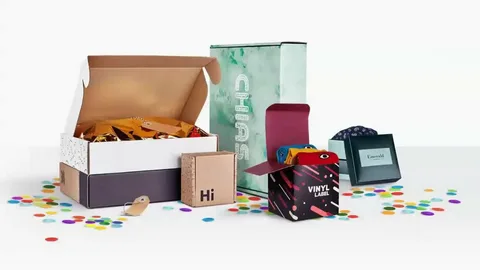Choosing the right packaging is crucial for any business, as it directly impacts product presentation, customer experience, and brand perception. Two primary packaging options are available: custom and stock packaging. Understanding the differences between these options can help businesses make informed decisions that align with their goals and resources.
Understanding Stock Packaging
Stock packaging refers to pre-made, standardized packaging solutions available in various sizes and styles. These are mass-produced and readily available for immediate use. Stock packaging is often used by businesses that require quick turnaround times and cost-effective solutions. While functional, stock packaging offers limited customization options and may not align perfectly with a brand’s identity.
Exploring Custom Packaging
Custom packaging involves designing packaging tailored to a specific product’s dimensions, branding, and unique requirements. This option allows businesses to create a distinctive unboxing experience, reinforce brand identity, and ensure optimal product protection. Custom packaging can include personalized designs, logos, colors, and materials that resonate with the target audience.
Cost Considerations

One of the primary differences between custom and stock packaging is cost. Stock packaging is generally more affordable due to its mass production and standardization. In contrast, custom packaging involves additional expenses for design, prototyping, and manufacturing, leading to higher upfront costs. However, custom packaging can offer long-term value through enhanced brand recognition and customer loyalty.
Branding Opportunities
Custom packaging provides businesses with the opportunity to showcase their brand’s personality and values. Through unique designs and personalized elements, custom packaging can create a memorable impression on customers, fostering brand loyalty and differentiation in the market.
Product Protection
Custom packaging allows for precise sizing and design, ensuring that products are securely protected during transit. This tailored approach reduces the risk of damage and enhances the overall customer experience. Stock packaging, while functional, may not provide the same level of protection, especially for fragile or irregularly shaped items.
Lead Time and Availability
Stock packaging offers quick availability, making it suitable for businesses with urgent packaging needs. Custom packaging requires additional time for design, approval, and production, which may lead to longer lead times. Businesses must consider their timelines and plan accordingly when opting for custom packaging.
Environmental Impact
With increasing consumer awareness of environmental issues, sustainable packaging has become a significant consideration. Custom packaging allows businesses to select eco-friendly materials and design packaging that minimizes waste. Stock packaging may not always offer the same level of sustainability, depending on the materials used.
Scalability and Flexibility
Stock packaging is readily available in large quantities, making it suitable for businesses with high-volume production needs. Custom packaging offers flexibility in design and can be scaled to meet changing demands, allowing businesses to adapt to market trends and customer preferences.
Customer Perception
The packaging of a product plays a crucial role in shaping customer perceptions. Custom packaging can elevate the perceived value of a product, making it appear more premium and thoughtfully presented. Stock packaging may convey a more generic image, potentially affecting customer expectations and satisfaction.
Decision-Making Factors
When deciding between custom and stock packaging, businesses should consider factors such as budget, brand identity, product type, and customer expectations. Custom packaging is ideal for businesses aiming to create a strong brand presence and offer a unique customer experience. Stock packaging is suitable for businesses seeking cost-effective solutions with quick turnaround times.
Conclusion
Both custom and stock packaging have their advantages and considerations. The choice between the two depends on a business’s specific needs, goals, and resources. By carefully evaluating these factors, businesses can select the packaging solution that best aligns with their objectives and enhances their product offerings.

Leave a Reply